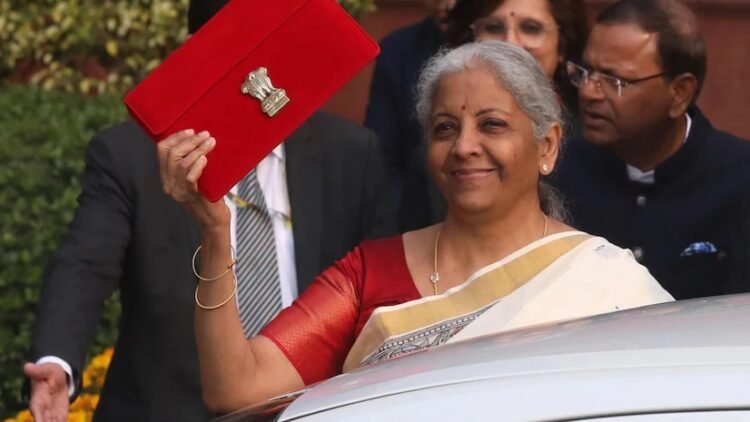NEW DELHI (India CSR): Finance Minister Nirmala Sitharaman has introduced significant changes to India’s income tax structure in the Union Budget 2025, providing much-needed relief to middle-class taxpayers and substantial savings for higher-income earners.
One of the biggest announcements in this budget is the increase in income tax rebate from Rs 7 lakh to Rs 12 lakh under the new tax regime. This means that individuals with a taxable income up to Rs 12 lakh will not have to pay any income tax.
But what does this mean for those earning more than Rs 12 lakh? Will their tax liability be reduced proportionally, or will they still need to pay taxes as per the revised slabs? Let’s break it down.
Income Tax Rebate Up to Rs 12 Lakh – Who Benefits?
The biggest winners in this budget are individuals earning up to Rs 12 lakh per annum, as they will now have zero tax liability.
How Does This Work?
- Earlier, individuals earning up to Rs 12 lakh under the new tax regime had to pay Rs 80,000 as income tax.
- Now, with the revised rebate, their tax liability becomes zero.
This move will significantly increase disposable income for salaried professionals, small business owners, and self-employed individuals in the middle-income category.
However, if your income exceeds Rs 12 lakh, even by a single rupee, you will have to pay taxes as per the new income tax slabs.
If You Earn Above Rs 12 Lakh, How Much Tax Will You Pay?
Many taxpayers are wondering if someone earning Rs 15 lakh will only have to pay tax on Rs 3 lakh (after the Rs 12 lakh rebate). The answer is no.
The rebate is applicable only if your taxable income is Rs 12 lakh or less. If your income exceeds Rs 12 lakh, you will be taxed according to the revised income tax slabs under the new tax regime.
Example Calculation:
If an individual earns Rs 12.1 lakh, the tax calculation will be as follows:
- Rs 4 lakh to Rs 8 lakh → 5% tax
- Rs 8 lakh to Rs 12 lakh → 10% tax
- Rs 12 lakh to Rs 16 lakh → 15% tax
Total Tax for Rs 12.1 lakh income: Rs 61,500
For someone earning Rs 15 lakh, the tax structure will be:
- Rs 4 lakh to Rs 8 lakh → 5% tax
- Rs 8 lakh to Rs 12 lakh → 10% tax
- Rs 12 lakh to Rs 16 lakh → 15% tax
Total Tax for Rs 15 lakh income: Rs 1,05,000
Even though there is no direct rebate for incomes above Rs 12 lakh, the government has made major reductions in tax rates for higher income brackets, which will result in significant savings.
What About Those Earning Above Rs 15 Lakh?
While taxpayers earning up to Rs 12 lakh get full tax exemption, those earning above Rs 15 lakh will also benefit due to sharp reductions in tax rates for different income slabs.
Under the previous tax structure, any income above Rs 15 lakh was taxed at 30%. The new tax regime lowers this tax burden, introducing gradual tax rates for incomes between Rs 12 lakh and Rs 24 lakh.
New Tax Slabs for Incomes Above Rs 12 Lakh:
| Income Range | Previous Tax Rate | New Tax Rate |
|---|---|---|
| Rs 12 lakh – Rs 16 lakh | 30% | 15% |
| Rs 16 lakh – Rs 20 lakh | 30% | 20% |
| Rs 20 lakh – Rs 24 lakh | 30% | 25% |
| Rs 24 lakh and above | 30% | 30% |
This means that earlier, someone earning Rs 20 lakh would have to pay Rs 3 lakh in taxes under the flat 30% rate.
Now, under the revised structure:
- The portion of income between Rs 12 lakh and Rs 16 lakh will be taxed at 15% instead of 30%.
- The portion of income between Rs 16 lakh and Rs 20 lakh will be taxed at 20% instead of 30%.
- The portion of income between Rs 20 lakh and Rs 24 lakh will be taxed at 25% instead of 30%.
This results in tax savings of up to Rs 1.1 lakh for high-income earners.
Major Tax Savings for Higher Earners
With this new tax structure, individuals earning above Rs 24 lakh will now save up to Rs 1.1 lakh in taxes compared to the previous system.
For example, under the old regime, someone earning Rs 30 lakh per year would pay Rs 6 lakh in income tax.
Under the new regime, they will now pay only Rs 4.9 lakh, leading to significant savings.
How Will These Tax Changes Impact the Economy?
1. Increased Disposable Income for Middle-Class Families
With zero tax on income up to Rs 12 lakh, middle-class households will have more money to spend, save, or invest. This will boost domestic consumption and economic growth.
2. More Incentives for Higher Earners
The reduction in tax rates for incomes above Rs 15 lakh will encourage entrepreneurs, business owners, and professionals to invest more in their businesses.
3. Simplification of the Tax System
With fewer tax slabs and reduced rates, the new tax regime is simpler and easier to understand. This will likely increase compliance and reduce tax evasion.
Is the New Tax Regime Better Than the Old One?
The government has been promoting the new tax regime as a simpler alternative to the old tax system, which had multiple deductions and exemptions.
Pros of the New Tax Regime:
- Lower tax rates for higher-income groups
- Simplified tax calculation process
- More money in the hands of taxpayers
Cons of the New Tax Regime:
- No exemptions on housing loan interest, 80C investments, or medical insurance
- Individuals who rely on deductions may not benefit as much
For many, the choice between the old and new tax regimes will depend on their investment habits and financial planning goals.
You Learn: A Win-Win Budget for Taxpayers
The Income Tax Budget 2025 brings major benefits for middle-class and high-income taxpayers alike.
- Individuals earning up to Rs 12 lakh will now pay zero tax.
- Higher earners will benefit from lower tax rates, leading to savings of up to Rs 1.1 lakh.
- The new structure simplifies tax calculations and reduces compliance burdens.
With increased disposable income, business-friendly tax reforms, and a simplified system, this budget is expected to drive economic growth and boost consumer confidence.


























